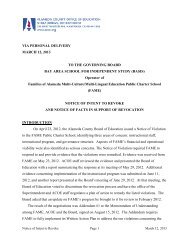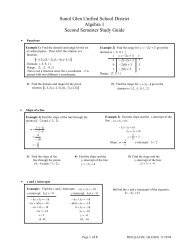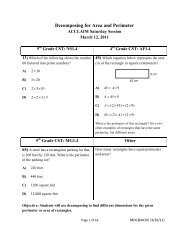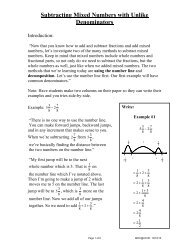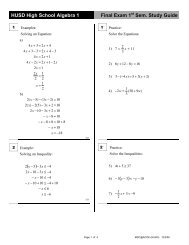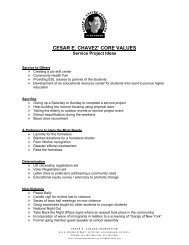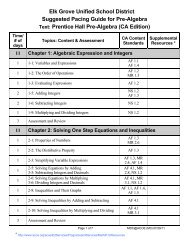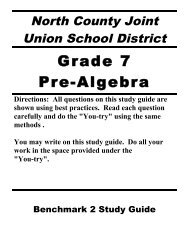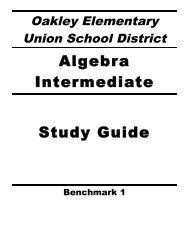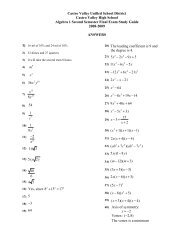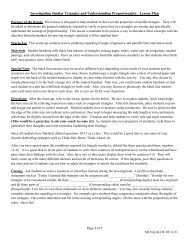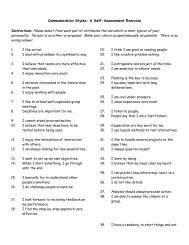Foundational Literacy Skills for EL- English Learners (CA Dept of ...
Foundational Literacy Skills for EL- English Learners (CA Dept of ...
Foundational Literacy Skills for EL- English Learners (CA Dept of ...
Create successful ePaper yourself
Turn your PDF publications into a flip-book with our unique Google optimized e-Paper software.
Oral <strong>English</strong> Language Pr<strong>of</strong>iciency is Crucial <strong>for</strong> <strong>English</strong> <strong>Literacy</strong> Learning<br />
o<br />
o<br />
Research Findings: Oral pr<strong>of</strong>iciency in <strong>English</strong> (including oral vocabulary,<br />
grammar, and listening comprehension) is critical <strong>for</strong> <strong>English</strong> learners to develop<br />
pr<strong>of</strong>iciency in text‐level <strong>English</strong> reading comprehension: word identification<br />
skills are necessary but not sufficient.<br />
Implications: Instruction <strong>for</strong> <strong>English</strong> learners in oral language knowledge, skills,<br />
and abilities must be explicit, intensive, and extensive. In order to be successful<br />
in reading <strong>English</strong>, <strong>English</strong> learners must develop pr<strong>of</strong>iciency in listening and<br />
speaking skills in <strong>English</strong>—depth and breadth <strong>of</strong> vocabulary, as well as<br />
grammatical structures—at the same time they are developing foundational<br />
skills in reading and writing <strong>English</strong>.<br />
Native Language <strong>Literacy</strong> <strong>Skills</strong> Facilitate <strong>English</strong> <strong>Literacy</strong> Learning<br />
o<br />
o<br />
o<br />
Research Findings: <strong>Learners</strong> learn to read in their native language be<strong>for</strong>e or at<br />
the same time as they are learning to read <strong>English</strong><br />
<strong>English</strong> learners’ native language literacy skills can help them learn <strong>English</strong><br />
literacy foundational skills.<br />
Implications: Instruction <strong>for</strong> <strong>English</strong> learners will need to vary based on<br />
variations among <strong>English</strong> learners’ native language writing systems, as well as<br />
<strong>English</strong> learners’ experiences with literacy in their native language. For example,<br />
students who are literate in a language that uses the Latin alphabet (such as<br />
Spanish) will be able to transfer decoding and writing skills more easily than a<br />
student literate in a language with a non‐Latin alphabet (such as Arabic, Korean,<br />
or Russian) or a language with a symbol‐based writing system (such as Chinese).<br />
Similarly, students literate in a language related to <strong>English</strong> (such as Spanish or<br />
Russian) will be able to use knowledge <strong>of</strong> cognates (words with similar meaning<br />
and spelling in both languages), whereas students literate in unrelated<br />
languages (such as Arabic, Chinese, or Korean) will not.<br />
Reading <strong>Foundational</strong> <strong>Skills</strong> Alignment Charts <strong>for</strong> <strong>English</strong> Language Development<br />
The charts in this appendix outline general guidance on providing instruction to <strong>English</strong> learners<br />
on literacy foundational skills aligned to the Cali<strong>for</strong>nia Common Core State Standards Reading<br />
Standards: <strong>Foundational</strong> <strong>Skills</strong>. This guidance is intended to provide a general overview, and<br />
does not address the full set <strong>of</strong> potential individual characteristics <strong>of</strong> <strong>English</strong> learner students<br />
that need to be taken into consideration in designing and providing literacy foundational skills<br />
instruction (e.g., students who have changed schools or programs frequently, or who have<br />
interrupted schooling in either their native language or <strong>English</strong>). While the focus <strong>of</strong> this<br />
appendix is on literacy foundational skills, instruction in these skills should be integrated with<br />
instruction in reading comprehension and in content across all disciplines, as emphasized in the<br />
<strong>EL</strong>D standards. The organization and content <strong>of</strong> the charts is described below.<br />
First Column: Student Language and <strong>Literacy</strong> Characteristics<br />
This column outlines some general characteristics <strong>of</strong> <strong>English</strong> learners’ previous<br />
experience with language and literacy—in both their native language and in <strong>English</strong>—<br />
that need to be taken into consideration when determining which reading foundational<br />
skills a student may need to develop. These characteristics are:<br />
2



